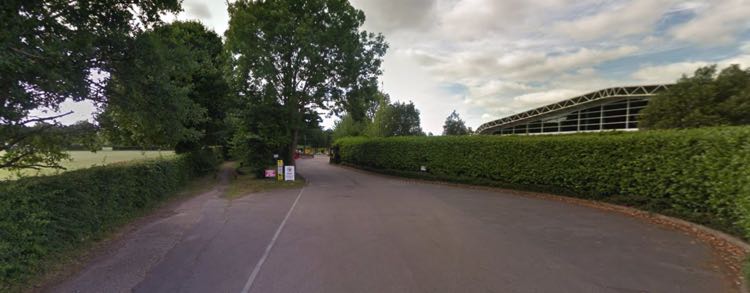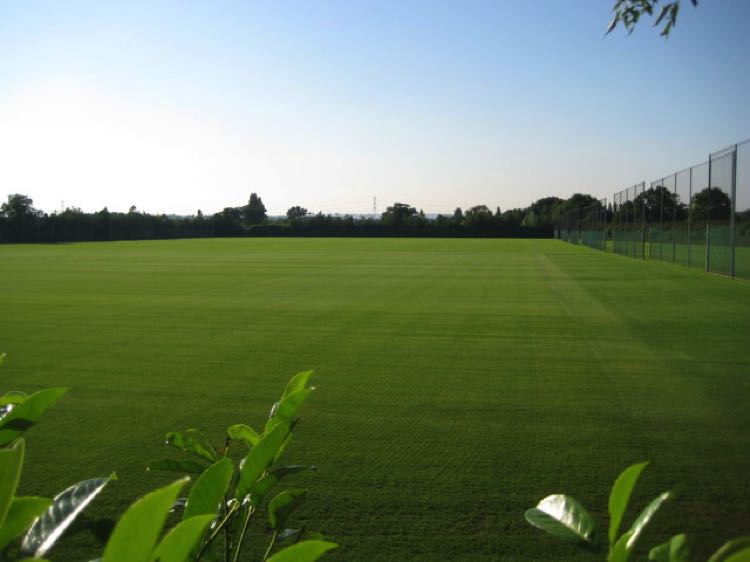Where a club train is almost as important as where a club plays, as in training the conditions have to be as similar to the stadium pitch as possible so that the players have as big an advantage as possible over the opposition. As well as this a training ground must have the most up-to-date and high-quality equipment and all the best facilities to allow the players to improve and the manager get the best out of them.
The Arsenal Training Centre: London Colney
Arsenal’s training facility is located in London Colney in Hertfordshire, and whilst it is officially called the Arsenal Training Centre, it is often referred to simply as London Colney. The full address is Bell Lane, London Colney, St Albans AL2 1DR. The site covers around 143 acres of land in total, and this is a huge area just for the training grounds.
Training Facilities
These wonderful, modern training facilities of the Gunners are about 13 miles away from their stadium, the Emirates Stadium. The training centre was opened fairly recently in October 1999 whilst manager Arsène Wenger was still in charge of the club and Wenger used the state-of-the-art facility to rebuild the Gunner’s fitness and training program and help them to multiple trophies and titles.
The Arsenal Training Centre is decked out with 10 full-size pitches, an indoor training pitch and training centre, and a medical and rehabilitation hub. The training facilities cost the club £10m and is the training location for the Arsenal men’s and women’s teams and the youth teams.
Can Fans Visit Arsenal’s Training Grounds?
Although fans cannot go and watch Arsenal train regularly, there is an open training session for members who are lucky enough to see the players put to work by their manager, as well as getting more personal conversations with the players and staff.
If fans are lucky, and patient enough, they can wait outside the training grounds to try and get a photo or autograph from the players. Many supporters do this to try and meet their heroes and some players are more than willing to take the time to stop and greet fans. However, there is no guarantee that players will engage, or for that matter even be there on any given day.
Importance of the Training Ground
Training grounds nowadays in football are vitally important to the success of a club and the players. If the facilities are poor the team will fall behind their competition due to many factors, and investment in a top-class training site is often one of the first things on a manager’s wish list.
They are important to help avoid injuries, for one thing. If a team is playing on artificial grass or hard ground this has a negative effect on a player’s joints as they have to run so much which can lead to nasty knee and leg injuries. This can also affect the goalkeeper as although they are not running, if they aren’t training on real grass, which is much softer, this can injure a goalkeeper’s hips and legs if they are diving onto a hard surface such as astroturf or a 3G or 4G pitch.
Upkeep of the Training Ground

A lot of funding must go into the upkeep of the training grounds pitches to ensure they are always in top condition for the players and so they are not getting injuries. To help the groundskeepers with their job the pitches have inbuilt undersoil drainage systems and automated sprinklers to keep the pitches hydrated and healthy. Not only this, but two of the pitches are boast undersoil heating. All are kept at the same standard as the pitch in the Emirates Stadium and the same dimensions too.
Gym equipment and facilities are also vitally important for similar reasons. They are not only useful for keeping players fit and strong but also for keeping them from getting injured. If a set of gym equipment is out of date it could contribute to injuring players. If such exercise turns out to do more harm than good then a lack of investment will soon show itself to be a very poor idea.
Recently Modernised
Although the Arsenal Training Facility was opened in 1999, the equipment and facilities have been modernised and updated over the years. Since it opened more than 20 years ago, the north London giants have developed the training ground and improved the facilities inside to have the optimum capabilities for player development and training. The medical and rehabilitation centre was opened in 2011, with improvements to the training pitches being made in 2015.
Further upgrades to the facility were carried out at this time, with extra offices and meeting rooms added. A cryochamber and improved ice baths, as well as a whole host of state-of-the-art sports medicine facilities were added, with this work due to be finished in time for the start of the 2017/18 season.
If Arsenal did not make these changes since London Colney was opened in 1999, this would have had the potential to scare away many of their best players since. It would certainly make it harder to attract top-class players (and management). A club’s facilities are one of the biggest selling points for many of the world’s top players looking for a new club. Despite what the media may say, they are not only looking for a pay rise and playtime, but also to have the facilities to develop and improve.
Former Training Ground: University College London
 Before the current Arsenal Training Facility was constructed Arsenal used the University College London groundshare site. However, when ArsèneWenger came to the club he pushed for a new up-to-date and personal training ground to be constructed.
Before the current Arsenal Training Facility was constructed Arsenal used the University College London groundshare site. However, when ArsèneWenger came to the club he pushed for a new up-to-date and personal training ground to be constructed.
As the University College London site was not an optimal training facility for Arsenal to improve in the way that Wenger wanted them to, the new boss eventually won the campaign for a new training site, much to the delight of the players and fans. London Colney is the result and with continued improvements sure to be implemented, we can expect it to remain one of the best training grounds in the Premier League.

